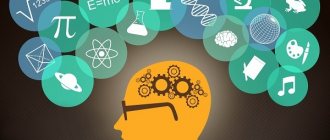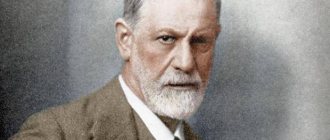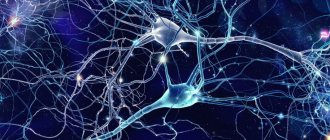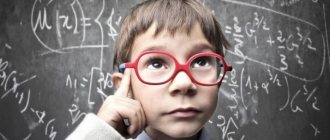Every day a person is faced with many images, information, emotions and impressions. Many people dream of remembering this without stress. Memory is a treasure trove and wealth, and its importance in our lives cannot be overestimated.
Many people believe that the ability to remember without extra effort is an innate gift, a gene that we have as a given. However, this is not quite true.
Types of memory
Information entering the brain is grouped under the influence of the characteristics of mental activity, measures of image awareness, the type of functioning goals, and duration.
Based on the organs of perception of objects, according to the characteristics of inferential activity, memory is divided into types:
- Imagery (created through sensations) differs according to the senses:
- visual;
- auditory;
- taste;
- olfactory;
- tactile.
- The motor form manifests itself in the form of preservation and reproduction of operations associated with movements (swimming skills, skating, cycling, football).
- The emotional aspect is revealed in feelings; it refers to the most reliable process of fixing objects. This is the preservation of experienced emotions (fear, shame, joy, anger).
- Semantic (semantic) group, where memorization is based on thinking processes and words. Such memory can be of a mechanical type (developed in the process of repeated repetition of information without comprehension) and logical type (based on the development of logical connections).
Based on the ratio of degrees of awareness, the following types of memory are divided:
- the implicit form is the preservation of images expressed unconsciously;
- the explicit subtype is based on the deliberate application of acquired information.
In connection with the goals of activity, the following types of memory are divided:
- unconscious thinking that appears in the mind regardless of the tasks assigned;
- conscious memorization, enabled by moderate retention of objects, associated with specific tasks.
Based on the duration of retention of pictures in memory, the following types are determined:
- instantaneous (sensory) mode, which retains information received from the senses without processing it;
- short-term form, characterized by short-term perception and reproduction of images in the first seconds after awareness;
- operational view, functioning only at the moment of performing specific tasks, then the information is erased after some time;
- long-term form refers to long-term storage of information, characterized by repeated use.
According to the purposes of the study, memory is divided into types:
- genetic (inherited);
- biological;
- episodic (saving individual fragments of images);
- reconstructive (correction of broken chains);
- reproductive (constant repetition of the reproduction of a stored object);
- associative (creating links between saved and existing objects);
- autobiographical (remembering events from personal life).
Study of the phenomenon
In 1907, the phenomenon of eidetic memory was discovered by the Slovenian scientist Viktor Urbancici.
The theory of this type of ability was studied throughout 1920-1940:
- Scientist Erich Jaensch made a great contribution to the development of science; his research was carried out at the University of Marburg (Germany).
- Soviet scientists made a great contribution to the development of the field: Lev Vygotsky, Pavel Blonsky, Sergei Rubinstein, Boris Teplov, Anatoly Shemyakin, Polina Ephrussi.
- The first mentions of the phenomenon were published in the books of Pavel Blonsky “Pedology” and Sergei Kravkov “Essays on Psychology” (1925 edition).
Scientists and researchers usually did not pay attention to the theoretical study of the phenomenon: most of the time was devoted to practical application. The works of scientists outline a large amount of information regarding the listing of the main problems of working with gifted children, a description of the results of experiments, the content of research protocols, and evaluation of the work done.
The 63rd volume of the Great Soviet Encyclopedia was published in 1963, and included Alexander Luria’s article “Eidetism.” The author describes in it the rarity of the phenomenon in its pure form and its spread in childhood, its extinction in adulthood, and the reasons why this happens.
Eidetic research was completely abandoned after the Great Patriotic War. In 1936, a direction in pedagogy came into force, which set as its goal to combine various approaches to science and methods of child education.
Causes of poor memory
Simple folk methods for improving memory Phenibut for improving memory How to develop photographic memory
Poorly developed visual memory is not necessarily the key to all troubles
This is not fundamentally important. But still, most information passes through the eyes
And in order to fully embrace the entirety of the world around us, we need to have a developed visual analyzer. Well-developed visual memory is the key to adequate learning and good memorization. The level of development of this type of memory affects the speed of learning and its quality.
The absence or insufficient attention to the baby, the lack of educational games and activities will certainly affect further learning and activity. But there are also acquired reasons for the deterioration and decrease in the quality of the “work” of the visual analyzer
Before this, my memory was good, no one complained, but over time I became absent-minded, you remember poorly and pay little attention to details. What are the reasons?
- Traumatic brain injuries, previous neuroinfections and cerebrovascular accidents - these pathological conditions will necessarily entail the destruction of a large number of nerve synapses and the nerve cells themselves. Trauma can damage precisely the department that is responsible for visual analysis.
- Age-related changes - every person develops encephalopathy to one degree or another. This occurs due to the gradual emptying of blood vessels, the formation of small blood clots in the lumen and disruption of the nutrition of glial cells and the neurons themselves. Brain cells gradually die off, and the number of actively working cells decreases sharply. The remaining nerve cells cannot cope with the previous flow of information and direct all their forces to more important matters - vital functions. And visual memory remains in the background for those cells that are not involved in important processes to ensure the normal functioning of the body.
- Intoxication and bad habits - any manifestation of euphoria without medicinal intervention of the appropriate group of drugs entails the death of a huge number of nerve fibers. Tissue is replaced and the brain is adjusted to provide more important functions. Therefore, visual memory suffers.
- Lack of nutrients in food - nerve cells need more than just oxygen. But also the nutritional elements that come with food. For example, insufficient consumption of fatty acids and vitamins, glycine lead to deterioration of brain function.
- Emotional and mental overload - nerve cells are on the verge of exhaustion, so we decided to take care of ourselves. They turned on lite mode, in which they protect themselves and do not work at full capacity. In this case, a good rest will return everything to its place.
If visual memory is poorly developed in children, this can lead to problems with memorization, learning ability, and, against this background, behavioral disorders in general.
Sometimes poorly developed visual memory can cause poor adaptation in the environment and society. A sharp deterioration in memory in an adult leads to absent-mindedness, decreased memory, difficulty in temporary adaptation, and psychological problems.
How does eidetism work in a child and an adult?
Photographic memory is an age-related feature in preschool children. It is usually lost during the transition to adolescence. Scientists have determined that eidetic images arose at the beginning of the emergence of human culture, but simultaneously with the development of civilization, the phenomenon disappeared, and abstract thinking took its place.
The phenomenon is most common in children and adolescents and is rare in adults. Scientists believe that the process of loss of eidetism is associated with a person growing up and learning the skills of obtaining information in other ways.
Professor Haber in 1969, in a series of numerous experiments on children , derived the rules with the help of which eidetics control images and their memorization:
- They don't look at the object for long.
- The image is erased by intense blinking of the eyes or by averting them.
- Information is stored in the form of visual or verbal images. Moreover, people with the phenomenon do not have two abilities at the same time.
For the process of memorizing and retaining images, such people need an emotional background, an understanding of objects or phenomena and, as motivation, interest in what is happening. If all aspects are observed, memory may omit or correct some details of the picture seen.
The memorization process is based on creating a picture, which is gradually joined by other types of memory: auditory, tactile, olfactory. Such memory cannot be perceived as an objective phenomenon, since it is subject to personal interpretation by a person, followed by the same reproduction of details.
Paired images
This game is considered a children's game, so you can find it in the section of children's online games. Most often it is called “Paired Pictures”. Initially, such games were considered board games. The essence of the game is to collect pairs of identical pictures as quickly as possible.
To do this, players open any two cards, which are laid out face down in four or eight rows. You need to turn over any two pictures: if they match, they are removed to the side. If not, you need to remember where each picture remains, so that later, when a pair opens, you can quickly remember where the original option was and open both identical pictures.
In the electronic version you can play very quickly, then playing alone really turns into training. Try to memorize 64 pictures at once, even in pairs!
Main characteristics
Photographic memory, which can be developed if desired, is characterized by the continued visualization of images after they have disappeared. The picture that appears before your eyes is so real that it can be examined in detail.
The main properties of photographic memory are:
- remembering visual images;
- a lasting imprint of pictures in memory;
- the ability to return to memorized material at any time;
- joining the visual image of other senses (auditory, sensory, olfactory);
- subjective interpretation of paintings.
Degrees
The classification of the degrees of severity of the phenomenon was compiled jointly by the scientist E. Jaensch and his collaborators.
The division into groups occurs in 6 degrees, starting from the 0th to the 5th measure:
- During the stage, an afterimage (a continuation of what was seen) appears in memory after the disappearance of the object. The degree is characterized by short duration.
- Next, the object is visualized (giving the image clearer boundaries). Strong sensations of visual perception are added to the afterimage picture.
- Continued fixation of the image not only with the help of vision, but also with the influence of sound signals. Deviations in the size and shape of memorized objects are corrected.
- Memorizing visual images of non-complex objects. In this case, fixation is no longer required, complex objects are partially remembered.
- Bringing clarity and completeness to the visual image of complex objects.
- Complete visualization of complex images with all the small details.
According to the degree of severity of the phenomenon, a classification occurs of people who have the ability for logical representation, which are divided into 2 types:
- “T-type” represents people who have persistent and long-lasting imagery that does not require stimulation.
- “B-type” represents the type of people who have the ability to voluntarily awaken phenomena and consciously adjust images.
Associations
Associative thinking is another key to developing photographic memory. You need to create your own list of associative pictures, which psychologists call an “anchor list.” Words from this list should, according to psychologists, be associated with any arbitrary word, causing a strong association in your mind.
Thus, you can “add” two or three words to each word from your list. After two weeks of such exercises, you can memorize entire texts. It's the same with numbers. Any combination of numbers can be divided into numbers that will cause you a certain association with some event in your life or the lives of other people (even on the scale of an entire country).
What is the difference between visual and photographic memory, and which one needs to be developed?
Visual memory is the ability to remember visual images. If she is able to remember objects for a long time and accurately, then she moves into the region of the eidetic type.
Photographic memory, which can be developed over long periods of training, differs from visual memory by effortless memorization, that is, a lack of interest in retaining information.
In the case of a phenomenon, the process of storing information in the brain is as close as possible to photographing, that is, literally capturing the picture: as it is with all the details.
Visual memory captures an object without focusing on details, and possibly distorts them.
On a subconscious level, experts recommend developing photographic memory by expanding the capabilities of visual touch. There are developed training methods and exercises that you can perform at home in your free time.
How to prepare your brain?
The brain, like any other part of the human body, needs a balanced diet, sufficient rest, and moderate physical activity. By normalizing your lifestyle and maintaining it at the same level, you can significantly increase your mental abilities and improve your memory.
Dream
Healthy sleep helps brain activity reboot. In this way, the body “sorts out” all the information it receives during the day, and gets rid of unnecessary information.
During sleep, nerve fibers sort through memories, analyze what is important and what is not. Next, the brain stores the information received in certain areas of memory. This process is called consolidation.
Scientists recommend monitoring the quantity and quality of sleep. The normal duration of rest hours should be 7-8 hours.
Nutrition
The functioning of the nervous system is greatly influenced by proper nutrition. It is normal when the diet includes a sufficient amount of vitamins, fiber, proteins and healthy fatty acids.
It should be borne in mind that flavor enhancers and preservatives reduce mental performance, as well as red meat and alcohol, so it is recommended to include more natural foods in the menu. The Mediterranean diet is especially beneficial in summer.
The diet must include:
- fresh fruits;
- dairy products;
- whole grain dishes;
- pasta;
- leguminous plants;
- nuts, seeds;
- vegetable oil;
- fish;
- bird.
Physical exercise
The physiological side of the issue implies not only the presence of proper nutrition and a rational regime of wakefulness and sleep, but also moderate physical activity in the form of:
- morning exercises;
- walking in the fresh air;
- running;
- dancing.
Research has shown that regular physical activity improves cognitive function. During exercise, a substance is produced in the brain that promotes the restoration of neurons and the reconstruction of connections between them.
Development of photographic memory without complex training. Practical techniques
People who have good visual memory abilities can train to improve their eidetic memory. It is also necessary to practice for those people who do not have special abilities, but the techniques will help them develop brain activity.
You can exercise anywhere: on the way to work or school, while walking, in line at a store, at a public transport stop.
Practical techniques are based on the following methodology:
- You must watch for 30 seconds. to an object (phenomenon, person).
- Then, averting your eyes, try to reproduce all the details of what you saw in your memory.
Advertising and information for visitors can be considered as materials for memorization. The skill needs to be periodically checked to see how much all the gaps in the image are filled. You should not expect results to appear quickly, but with persistence you can still improve eidetism without special exercises.
Training information reproduction
However, eidetic memory is not only about remembering, but also about recalling what you remember. Consequently, we must learn to recall not only what happened an hour ago or the day before, but also “the affairs of days long past.”
One of the exercises is to cling to some bright event and try to unwind the chain: what happened before, what during, what after. Try to remember the details, restore the picture and sequence of events as if you were there again. The further you continue your training, the less significant the “starting” point may be for you.
Try for yourself various mnemonics (for example, the mnemonics we presented for memorizing numbers) - having moved to the same automatic level, they will help you consolidate this or that information for a long time.
The general development of memory will also be very useful.
(not only visual), as well as general training of brain activity - neurobics, learning languages, solving logic puzzles and even crosswords: don’t let your brain idle, and it will show you what you are capable of.
Photographic memory is a person’s ability to remember information he sees, without understanding it. The data is stored on the eye's internal screen and can be recalled in the future. The memorization process is very fast. It takes no more than 10 seconds. Photographic memory helps a person feel more confident in this world, since in just a moment he can remember a lot of useful information. Very often people wonder how to develop photographic memory? The answer is quite simple. She should be trained. To do this, there are special exercises that need to be performed daily. The duration of training depends on the characteristics of human perception. On average they take 1-3 months.
Trainings for mastering eidetism
Photographic memory (practical techniques will help develop the memorization process) can be trained at home. There are many techniques that develop eidetism in a short period of time.
These include:
- Schulte tables;
- special games;
- neurobics;
- Aivazovsky's method.
To make the training process more productive, you need to look for associations in the images you see.
Simple exercises to develop photographic memory
There are a number of simple exercises that can improve your thinking and memory:
- You need to find 2-3 mathematical, chemical or physical formulas. You need to look at each formula for 15-20 seconds. and imagine how it is registered in memory. Then you should close your eyes and check what you remember. Training should begin with easy formulas and systematically complicate them.
- You need to look at part of the text without reading, instead try to photograph it (take it in with your gaze). Next, you should close the book and write down the material that you remember. The training is performed as many times as needed to reproduce the entire text.
- You need to remember the largest number of numbers that are written in a column or line. The number of numbers should gradually increase.
Exercises with Schulte tables
Special tables with a random arrangement of numbers, having sizes from 3x3 and larger, consisting of numbers or letters, can help develop photographic memory.
Using the method developed by the German scientist Schult, it will be possible to improve peripheral vision and, as a result, memory. Tables can be downloaded for free from the Internet, printed or found in special applications (programs that work online).
The essence of the method is to fulfill the following conditions:
- You need to look strictly at the center of the table and use your peripheral vision to find numbers or letters in ascending order. In this case, you need to take into account the speed of finding symbols.
- During training, you cannot say anything to yourself (pronounce).
- To achieve good results, you should practice daily, but no more than several times.
- If it becomes clear that with each subsequent exercise the speed of passing the test drops, then the process must be stopped and rested for 15-20 minutes. During rest, you should not read, watch TV or carry out any mental work.
To start training, small tables measuring 3x3, 4x3 are suitable. Gradually the size of objects should increase.
Games
Japanese professor Makato Shichida is known for developing many games for children and adults to develop photographic memory.
The games offered by the professor are summarized in the table:
Photographic memory. How to develop through games
| Name | Props | Description |
| What has disappeared and what has appeared? | Cards with different images | You need to lay out 3 cards and examine them for 10-20 seconds. and close your eyes. Then increase the row or remove one card. As a result, you need to track what has disappeared or appeared. The game starts with 3 cards and gradually increases to 10-20. You can make the exercise more difficult by adding or removing 2-3 additional cards. |
| Place the blocks correctly. | Block constructor of different shapes and colors | It is necessary to fold a two-level structure with 3 cubes in each row. Next, the structure needs to be disassembled and folded correctly. You don’t have to assemble the initial design, but draw it on paper and then do it from memory. The game becomes more complicated through the introduction of blocks of different shapes and colors into the construction, increasing the number of levels and elements in the rows. |
| Find matching pairs. | Playing cards or with images that are duplicated | You should take 3 cards from the deck, examine them and place them face down. Then you need to select 3 identical cards from the deck and arrange them into corresponding inverted images. The pairs must match. Gradually the number of cards can be increased to 10-20. |
Neurobics
A set of exercises that help develop mental activity is called neurobics.
The method was developed by the American scientist Lawrence Kats; it involves the involvement of all 5 human senses, and each of them must learn to work in a new context. During exercise, neurotropin is produced, a substance that promotes the formation of new connections in brain cells.
The complex includes the following exercises:
- Exploring new smells (should be inhaled immediately after waking up). The method is explained by the fact that the sense of smell serves as the only conductor that is connected to the emotional centers of the brain.
- Reading magazines is not of interest. It is necessary to diversify the information received.
- Leg exercises. Scientists have proven that the soles of the feet contain a large number of nerve endings that interact with the brain. In order to implement the training, you need to learn how to perform some actions with your feet (picking up a pillow that has fallen from the sofa).
- Reading aloud.
- Expressing your thoughts using new words, that is, forming the same ideas in different words.
- Changing the usual pace of life and actions (people who are used to working quickly need to slow themselves down and vice versa).
- Training with the other hand (if the working hand is right, then you should switch to performing tasks with the left).
- Finding connections between unrelated objects (find something in common between an apple and a pear).
Aivazovsky method
A set of exercises that develop photographic memory is based on the peculiarities of perception of the great Russian artist, who could imagine a wave at a certain time and capture it on canvas, preserving the sensation of movement.
Exercises according to I.K. Aivazovsky consist of the following algorithm:
- It is necessary to select an object that is examined for 3-4 minutes.
- Next, you need to close your eyes and mentally reproduce the image in your mind.
- The resulting picture should be compared with the original.
- The exercise must be repeated every day 1-3 times until it is possible to create an image in memory that matches even in detail the selected object.
Exercises for developing photographic memory in combination with games and special training available online can help develop your abilities and open up new horizons professionally or creatively.
Experiments with texts
Try the following exercises. The text is printed on one sheet in a regular format with medium-sized letters (14 point). On another sheet of paper with the same text, your assistant should type some extra word. After reading the first sheet, you need to immediately turn your gaze to the second and quickly find the extra word.
Then there may be more and more such words, and the time to search for them becomes less and less. By the way, such work can, oddly enough, be helped by a game from the “Find the Cat” or “Find the Dog” series on the Internet. By playing it, you develop your ability to quickly find the “extra” in the picture. Agree, a cat looks out of place among school supplies. Your eye will learn to “catch” on such little things, and your training in finding extra words in the text will progress more successfully.











